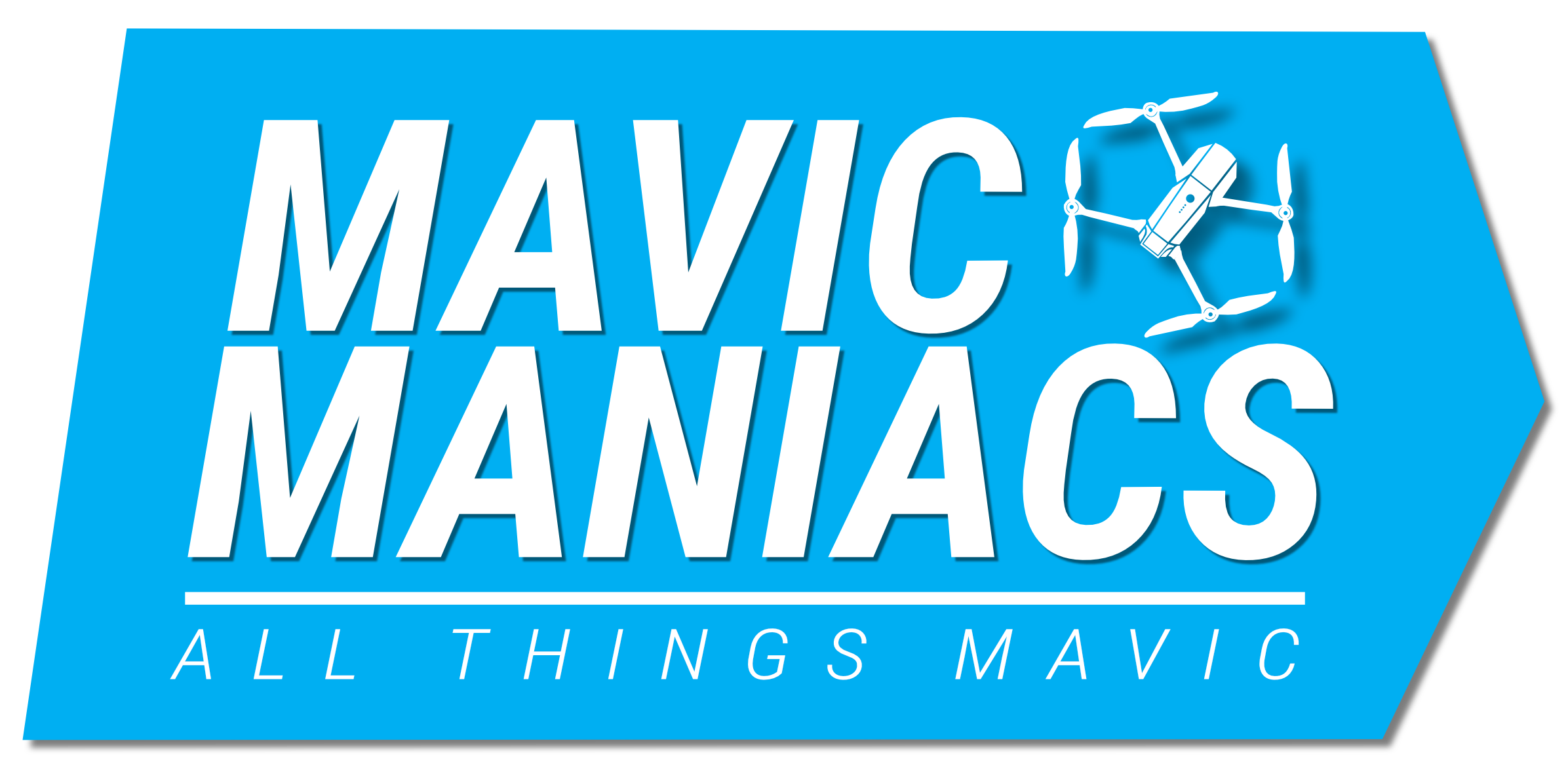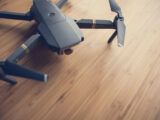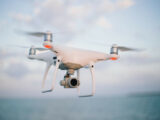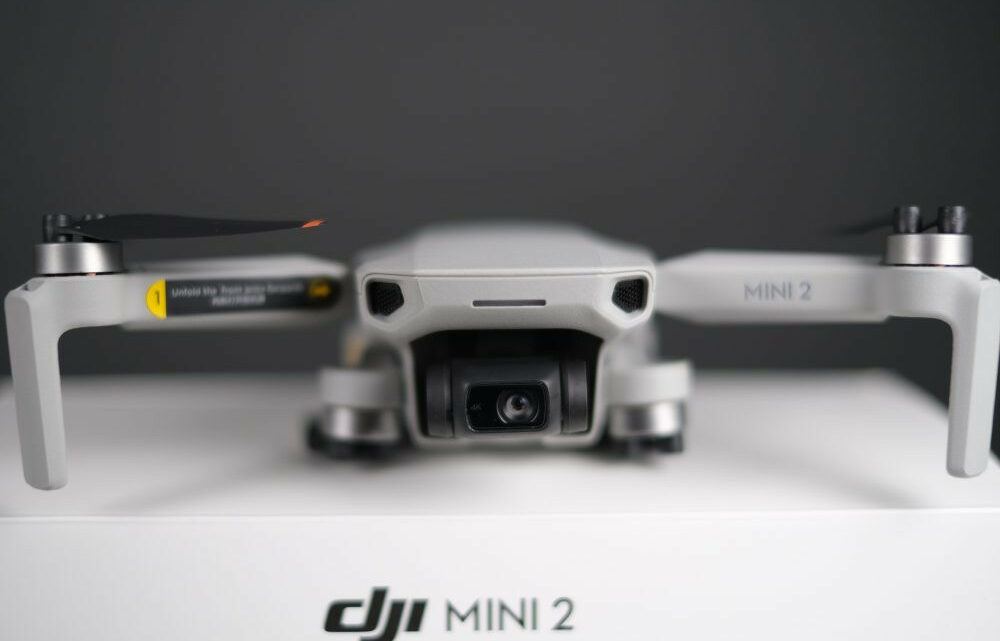
The DJI Mini 2 – Impressive Performance & Features In Such A Small Package!
November 5, 2020I know, I know… You had no idea another drone was coming. After all, leaks of photos, people getting one in their hands early, and sharing their findings via pics and videos have been popping over the past few weeks. Hell, we even knew the name and some of the specs! Still, I try not to talk about a product anymore, at least in a “these are the facts” sense until it’s officially released.
Sure, I’ll talk speculation all day. What we’d like to see, what we think is coming, and so on, but I won’t officially post a “this is it” article until the company announces and confirms what’s what themselves.
Well, yesterday, that happened, and I can officially say that the DJI Mini 2 is real and available. Surprise!
Now that the cat is out of the bag, let’s talk about this new drone, what it brings to the table if we really need another one right now, if it’s right for you, and so on…
THIS POST MAY CONTAIN AFFILIATE LINKS. PLEASE SEE MY AFFILIATE DISCLOSURE FOR MORE INFORMATION.
Table of Contents
 Really, Another Drone?
Really, Another Drone?
So there’s always the question of “Does the market really need another drone?” and to that, there are several responses. I happen to be in the “Hell yes!” camp. Still, everyone’s situation is different. There are a lot of factors to consider when deciding if another drone is really what the market needs:
Does it address a need?
Is this drone addressing a real need, or is it just tossed out there to see who will buy it?
What’s the target audience, and do they need the features this drone offers?
To this, I say, “This drone is targeting the causal user, traveler, and those that want to have a drone yet not have to deal with the bureaucracy set forth with registering based on weight.”
What does that mean? Well, it means different things to different demographics:
Casual User
This is just someone who wants a fun device, where they get great features in a small package and don’t have to worry too much about legal requirements and whatnot. They’re most likely not using it on a professional basis but appreciate the flight modes, ease of use, and compactness of the unit.
Traveler
In most cases, travelers are looking for something small but capable to take on their adventures. The DJI Mini 2 fits that need. It offers a lot in a tiny package that is easy to take anywhere.
Anti-Beaurocrat
This is the guy (or gal) that wants to tell the government to stick it. They want to fly, but they don’t want to be tracked and have to register and all that jazz. They just want to live their lives and enjoy their spoils.
I have no issue with that as long as they respect the laws and privacy of others, etc. (as should any pilot with any drone).
This drone’s whole reason for being was really to be under that 250g weight limit and avoid the registration requirement.
There are many other categories that we could discuss here, but I think the three above provide good examples.
So, what sets the DJI Mini 2 apart from the other drones out there? Let’s find out…
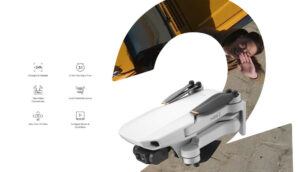 What Sets The DJI Mini 2 Apart From The Rest Of The Pack?
What Sets The DJI Mini 2 Apart From The Rest Of The Pack?
That’s the real question. What makes the DJI Mini 2 a must-have?
Its main claim to fame is that it falls under most regulatory legislation requiring the registration of drones that weigh so much. That said, it also packs a lot into the small package and bests a lot of the “toy” models out there, but that comes at a hefty price.
Frankly, it’s an upgrade from the DJI Mavic Mini. When the DJI Mavic Mini was released, it was DJI’s response to recent US legislation requiring that drones weighing over 250g to be registered. As such, they really didn’t need to put a lot of power and features into the unit to attract their audience. Don’t get me wrong, they did give the drone a decent feature set, but they didn’t go all-out and make it the best option out there.
Here’s a quick overview of how the DJI Mini 2 differs from the DJI Mavic Mini (I am only listing difference here so, if it’s not listed, it’s the same between both models):
The Dimensions Vary Slightly
The DJI Mavic Mini has folded dimensions of 140x82x57mm, where the DJI Mini 2 comes in at 138x81x58mm. The unfolded dimensions are 160x202x55mm and 159x203x56mm, respectively.
Performance
The Max Ascent Speed Has Increased A Little
The DJI Mavic Mini offers a max ascent speed of 4m/s in S mode, 2m/s in P mode, and 1.5m/s in C mode. The DJI Mini 2 tops all three, but only slightly at 5m/s, 3m/s in N mode, and 3m/s, respectively. Now percentage-wise, that speed increase is impressive: 20%, 33%, and 25%.
The Decent Speed Has Also Received A Performance Bump
The DJI Mavic Mini comes in at 3m/s in S mode, 1.8m/s in P mode, and 1m/s in C Mode, while the DJI Mini 2 offers 3.5m/s, 3m/s in N mode, and 1.5m.s respectively. Percentage-wise, that’s a 16+%, 66%, and 50% increase.
Max Speed Has Increased As Well
The DJI Mavic Mini offers 13m/s in S mode, 8m/s in P mode, and 4m/s in C mode. The DJI Mini 2 comes in at 16m/s, 10m/s in N mode, and 6m/s. That’s an increase of 23%, 25%, and 50%.
Service Ceiling
The DJI Mini 2 bests the DJI Mavic Mini by 33%, increasing the service ceiling from 3000m to 4000m!
Flight Time
It’s practically the same between the 2 models. The DJI Mini 2 comes in at 1 minute more for a total flight time of 31 minutes.
Wind Speed Resistance
Another increase from the old model to the new. The DJI Mavic Mini offered resistance of 8m/s (Scale 4), whereas the DJI Mini 2 offers 8.5-10.5m/s (Scale 5).
Max Tilt Angle
The DJI Mavic Mini had a max tilt angle of 30° in S mode, 20° in P mode, and 20° in C mode. The DJI Mini 2 increases that to 40°, 25° in N mode, and 25°. Interestingly, N and C modes can go up to a 40° tilt angle in strong winds.
Max Angular Velocity
Now this one is a bit mixed. The DJI Mavic Mini comes in at 150°/s in S mode, 130°/s in P mode, and 30°/s in C mode, where the DJI Mini 2 offers 130°, 60° in N mode, and 30°. It should be noted that this can be adjusted up to 250°/s using the DJI Fly app.
Transmission Specs
This is one big change between the models. The DJI Mini 2 offers DJI OcuSync 2.0, which provides both 2.4 and 5GHz frequencies. The DJI Mavic Mini only offers 2.4 GHz. This new transmission system offers better reliability, signal quality, and range. The range on the DJI Mavic Mini maxed out at 4000m, whereas the DJI Mini 2 maxes out at 10km.
GPS/GNSS
In addition to GPS+GLONASS, the DJI Mini 2 has also includes GALILEO support.
Hovering Accuracy Range
For the most part, both units are identical with one exception… The DJI Mavic Mini offers a Horizontal hovering accuracy of +/-0.1m using vision positioning, whereas the new DJI Mini 2 only offers +/- 0.3m accuracy.
Gimbal
Maximum Control Tilt Speed
The older DJI Mavic Mini actually bests the newer DJI Mini 2 in this category at 120°/s vs. 100°/s.
Camera
ISO Range – Photo Auto
The new DJI Mini 2 has increased the ISO range to 100-3200 from 100-1600 in the older DJI Mavic Mini.
Still Photography Modes
The DJI Mini 2 has added the following modes that the DJI Mavic Mini simply does not offer:
- JPEG+RAW Interval: 5/7/10/15/20/30/60s
- Auto Exposure Bracketing (AEB): 3 bracketed frames at 2/3 EV Bias
- Panorama: Sphere, 180°, and Wide
Video Resolution
The DJI Mini 2 added a 24fps option to FHD and 2.7K recording resolutions and now offers 4K at 24/25/30fps. The DJI Mavic Mini does not offer 4K.
Max Video Bitrate
This is a huge increase from the DJI Mavic Mini’s 40Mbps to 100Mbps in the DJI Mini 2.
Zoom Range
This one is easy; the DJI Mavic Mini doesn’t offer zoom. The DJI Mini 2 offers the following zoom options:
- 4K: 2x
- 2.7K: 3x
- FHD: 4x
Quickshot Modes
The new DJI Mini 2 adds the Boomerang quickshot mode to its arsenal.
Photo Formats
Here’s where the DJI Mini 2 bests the DJI Mavic Mini hands-down again. The DJI Mini 2 offers RAW, and the DJI Mavic Mini does not.
Now I know that was a lot to cover, and I didn’t cover the remote or battery, but I didn’t want to overwhelm you. That said, next up is the full spec list. Feel free to skip to the next section if you think you’ve gotten the gist of it all…
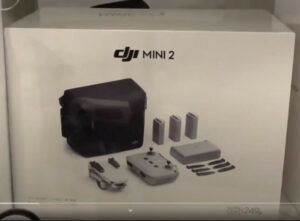 Let’s Talk Specs
Let’s Talk Specs
Aircraft
- Takeoff Weight [1]
- < 249 g
- Dimensions
- Folded: 138×81×58 mm (L×W×H)Unfolded: 159×203×56 mm (L×W×H)Unfolded (with propellers): 245×289×56 mm (L×W×H)
- Diagonal Distance
- 213 mm
- Max Ascent Speed
- 5 m/s (S Mode)3 m/s (N Mode)2 m/s (C Mode)
- Max Descent Speed
- 3.5 m/s (S Mode)3 m/s (N Mode)1.5 m/s (C Mode)
- Max Speed (near sea level, no wind)
- 16 m/s (S Mode)10 m/s (N Mode)6 m/s (C Mode)
- Max Service Ceiling Above Sea Level
- 4000 m
- Max Flight Time
- 31 mins (measured while flying at 4.7 m/s in windless conditions)
- Max Wind Speed Resistance
- 8.5-10.5 m/s (Scale 5)
- Max Tilt Angle
- 40° (S Mode)25° (N Mode)*25° (C Mode)** Up to 40° under strong winds
- Max Angular Velocity (by default)*
- 130°/s (S Mode)60°/s (N Mode)30°/s (C Mode)* Can be adjusted to 250°/s with the DJI Fly app
- Operating Temperature
- 0° to 40°C (32° to 104°F)
- Operating Frequency [2]
- 2.400-2.4835 GHz, 5.725-5.850 GHz
- Transmitter Power (EIRP)
- 2.400-2.4835 GHzFCC ≤ 26 dBmCE ≤ 20 dBmSRRC ≤ 20 dBm5.725-5.850 GHzFCC ≤ 26 dBmCE ≤ 14 dBmSRRC ≤ 26 dBm
- Global Navigation Satellite System (GNSS)
- GPS+GLONASS+GALILEO
- Hovering Accuracy Range
- Vertical: ±0.1 m (with Vision Positioning), ±0.5 m (with GPS Positioning)Horizontal: ±0.3 m (with Vision Positioning), ±1.5 m (with GPS Positioning)
Gimbal
- Mechanical Range
- Tilt: -110° to 35°Roll: -35° to 35°Pan: -20° to 20°
- Controllable Range
- Tilt: -90° to 0° (default setting) -90° to +20° (extended)
- Stabilization
- 3-axis (tilt, roll, pan)
- Max Control Speed (tilt)
- 100°/s
- Angular Vibration Range
- ±0.01°
Sensing System
- Downward
- Hovering Range: 0.5-10 m
- Operating Environment
- Non-reflective, discernable surfacesDiffuse reflectivity (> 20%,such as cement pavement)Adequate lighting (lux > 15, Normal exposure environment of indoor fluorescent lamp)
Camera
- Sensor
- 1/2.3” CMOSEffective Pixels: 12 MP
- Lens
- FOV: 83°35 mm format equivalent: 24 mm
- Aperture: f/2.8Focus range: 1 m to ∞
- ISO
- Video:100-3200 (Auto)100-3200 (Manual)Photos:100-3200 (Auto)100-3200 (Manual)
- Shutter Speed
- Electronic Shutter: 4-1/8000 s
- Max Image Size
- 4:3: 4000×300016:9: 4000×2250
- Still Photography Modes
- Single ShotInterval: JPEG: 2/3/5/7/10/15/20/30/60 sJPEG+RAW: 5/7/10/15/20/30/60 sAuto Exposure Bracketing (AEB): 3 bracketed frames at 2/3 EV BiasPanorama: Sphere, 180°, and Wide
- Video Resolution
- 4K: 3840×2160 @ 24/25/30fps2.7K: 2720×1530 @ 24/25/30fpsFHD: 1920×1080 @ 24/25/30/48/50/60fps
- Max Video Bitrate
- 100 Mbps
- Zoom Range
- 4K: 2×2.7K: 3xFHD: 4x
- QuickShot Modes
- Dronie, Helix, Rocket, Circle, Boomerang
- Supported File Formats
- FAT32 (≤ 32 GB)exFAT (> 32 GB)
- Photo Formats
- JPEG/DNG (RAW)
- Video Formats
- MP4 (H.264/MPEG-4 AVC)
Remote Controller & Video Transmission
- Operating Frequency
- 2.400-2.4835 GHz, 5.725-5.850 GHz
- Max Transmission Distance (unobstructed, free of interference) [3]
- 10 km (FCC)6 km (CE)6 km (SRRC)6 km (MIC)
- Signal Transmission Ranges (FCC) [4]
- Strong Interference (urban landscape, limited line of sight, many competing signals): Approx. 3 km
- Medium Interference (suburban landscape, open line of sight, some competing signals): Approx. 6 km
- Low Interference (open landscape abundant line of sight, few competing signals): Approx. 10 km
- Operating Temperature
- 10° to 40° C (14° to 104° F)
- Transmission Power (EIRP)
- 2.400-2.4835 GHzFCC ≤ 26 dBmCE ≤ 20 dBmSRRC ≤ 20 dBmMIC ≤ 20 dBm5.725-5.850 GHzFCC ≤ 26 dBmCE ≤ 14 dBmSRRC ≤ 26 dBm
- Battery Capacity
- 5200 mAh
- Voltage
- 1200 mA 3.7 V (Android)700 mA 3.7 V (iOS)
- Supported Mobile Device Size
- Max length: 92 mm
- Supported USB Port Types
- LightningMicro USB (Type-B) USB-C
- Video Transmission System
- OcuSync 2.0
- Live View Quality
- Remote Controller: 720p/30fps
- Max Bitrate
- 8 Mbps
- Latency (depending on environmental conditions and mobile device)
- About 200 ms
Charger
- Input
- 100-240 V, 50/60 Hz, 0.5 A
- Output
- 12V 1.5 A / 9V 2A / 5V 3A
- Rated Power
- 18 W
Intelligent Flight Battery
- Battery Capacity
- 2250 mAh
- Voltage
- 7.7 V
- Charging Voltage Limit
- 8.8 V
- Battery Type
- LiPo 2S
- Energy
- 17.32 Wh
- Weight
- 86.2 g
- Charging Temperature
- 5° to 40°C (41° to 104°F)
- Max Charging Power
- 29 W
App
- Name
- DJI Fly
- Required Operating System
- iOS v10.0 or later Android v6.0 or later
Supported SD Cards
- Supported SD Cards
- UHS-I Speed Class 3 or above is required. A list of recommended microSD cards can be found below.
- Recommended microSD Cards
- 16 GB: SanDisk Extreme32 GB: Samsung Pro Endurance, Samsung Evo Plus, SanDisk Industrial, SanDisk Extreme V30 A1, SanDisk Extreme V30 A2, SanDisk Extreme Pro V30 A1, SanDisk Extreme Pro V30 A2, Lexar 633x, Lexar 667×64 GB: Samsung Pro Endurance, Samsung Evo Plus, SanDisk Extreme V30 A1, SanDisk Extreme V30 A2, Lexar 633x, Lexar 667x, Lexar 1000x, Lexar High Endurance, Toshiba EXCERIA M303 V30 A1, Netac Pro V30 A1128 GB: Samsung Pro Plus, Samsung Evo Plus, SanDisk Extreme V30 A1, SanDisk Extreme V30 A2, SanDisk Extreme Plus V30 A1, SanDisk Extreme Plus V30 A2, Lexar 633x, Lexar 667x, Lexar 1000x, Lexar High Endurance, Toshiba EXCERIA M303 V30 A1, Netac Pro V30 A1256 GB: SanDisk Extreme V30 A1, SanDisk Extreme V30 A2
 So, Is The DJI Mini 2 Right For You?
So, Is The DJI Mini 2 Right For You?
This is the end-all question, isn’t it? Sadly, I can’t answer that for you. My wants and needs probably differ from yours.
I have the original DJI Mavic Pro and a DJI Phantom 4 v2.0. As such, I don’t really see a need for the DJI Mini 2. My use-cases are more on the commercial/professional level. I already register my drones (along with having my FAA Part 107 certificate/license), so the whole under 250g thing really doesn’t apply to me. Also, my DJI Mavic Pro is small enough for my travel needs. If anything, I would grab a DJI Mavic 2 Pro before going with the DJI Mini 2.
That’s just me. Your use-case(s) and needs should be your guide regarding whether or not the DJI Mini 2 is for you. If you decide it is, please consider purchasing through one of my affiliate links below. Doing so doesn’t cost you anything extra vs. going directly to the sites and placing your order, but it does give me a little kickback, which is greatly appreciated.
From Amazon.com
Direct from dji.com:
The DJI Mini 2 – Impressive Performance & Features In Such A Small Package! – Conclusion
I have to say that the DJI Mini 2 is a great improvement over the DJI Mavic Mini, even with those few specs where the original bested the newcomer. That said, it’s not the drone for me, so I’ll be holding out for the next Phantom or Mavic 3 offerings.
So, what do you think of the new DJI Mini 2? Did I miss a feature that you think should be included in this article? Do you have one in your hands and want to share your experiences with it? Do you just want to vent about something drone-related? Do you think this article’s title, “The DJI Mini 2 – Impressive Performance & Features In Such A Small Package!” is accurate? Let me know by commenting below.
Thank you,
Scott Hinkle
MavicManiacs.com
